Ethnic groups of the world, by Jimmy Nelson.
Jimmy Nelson, a renowned photographer, is an idealist, an esthete, by celebrating the beauty and uniqueness of communities in remote places on the planet, he wants to make us aware of a reality that most of us ignore: the disappearance of remarkable ethnic groups.
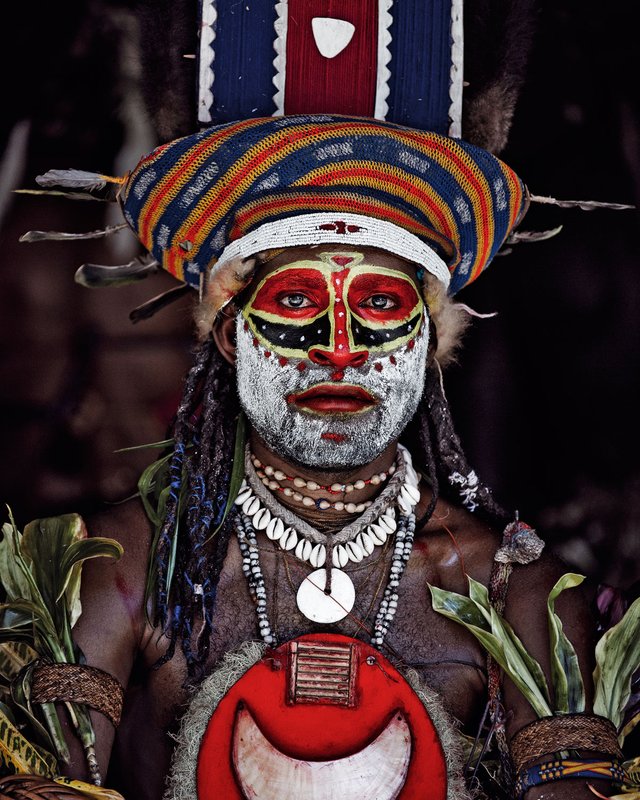
Faced with a photographer who hammers them that they are unique, people have a dramatic change in attitude: men, women and children become proud. The purity of humanity exists in the mountains, the jungle, the ice fields.
Jimmy Nelson succeeded in establishing a deep friendly relationship with these peoples of the world , and as this confidence was established, they became aware of the photographer's mission: to ensure that humanity never forgets Never its past. By supporting their cause, respecting their habitats, immortalizing their pride and helping them to pass on their traditions to future generations, each of us could delay what seems inevitable.
The Goroka - Papua New Zealand
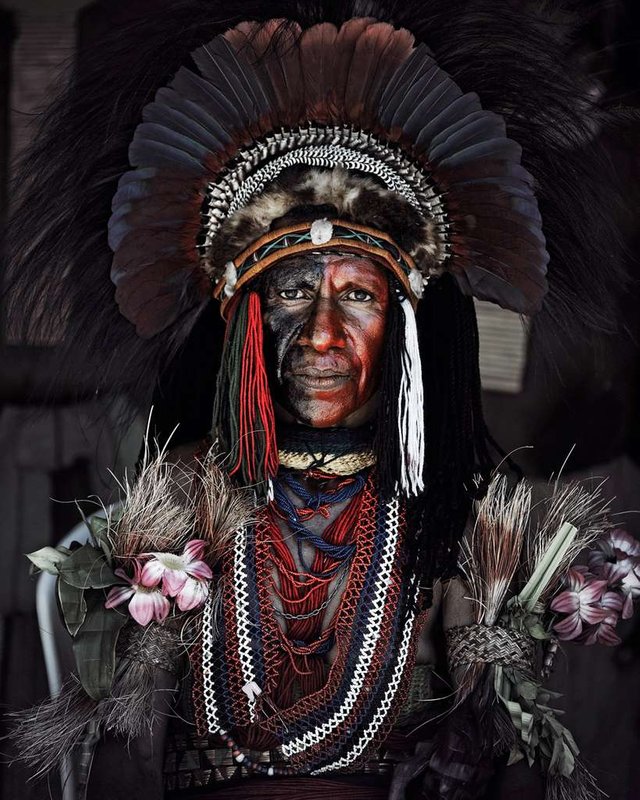
This Papuan tribe of Papua New Guinea lives on the second largest island in the world. The rugged terrain and historical inter-tribal war has led to the isolation of the village and the proliferation of distinct languages. A number of different tribes are scattered across the high plateau. Life is simple in mountain villages, looking for food, hunting, picking plants. The natives of this tribe have a great respect for nature. Tribal Wars are still in the news! The men spend a lot of time on their makeup and their outfit to impress the enemy. The tribes of the high plateaus provide tribes of the valley with feathers of decorative birds, Arboricultural kangaroos and skins of couscous and beautiful rare woods that have long since disappeared from the valley. The Goroka festival is the oldest of the island, it takes place all in September 16, Independence Day and reunited nearly 90 different tribes.
The Maasai - Tanzania Les Kazakhs - Mongolie
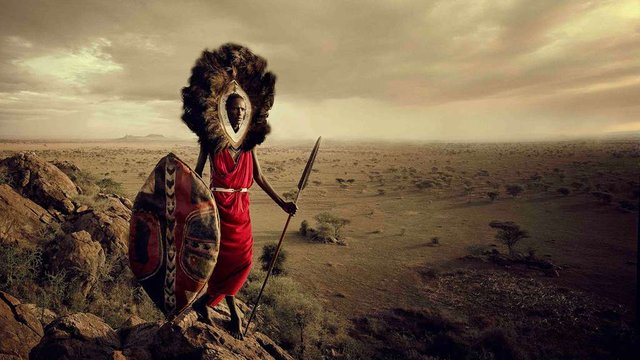
To be born Maasai is to belong to one of the last great warrior cultures in the world. The young Maasai must learn the cultural practices, the customary laws and the responsibilities that he must assume as an adult. They are famous for the aduma, a dance in which the young men execute their feet together with great leaps to demonstrate their strength and vigor as warriors. Nomads, they follow the regime of precipitation in search of food and water for their herds. Wealth is measured by the size of the livestock and the number of children. They live in huts called kraal or boma, built in semi-hard from mud, branches, herbs and cow dung. They wear many jewelry on the arms, feet,
The Kazakhs - Mongolie
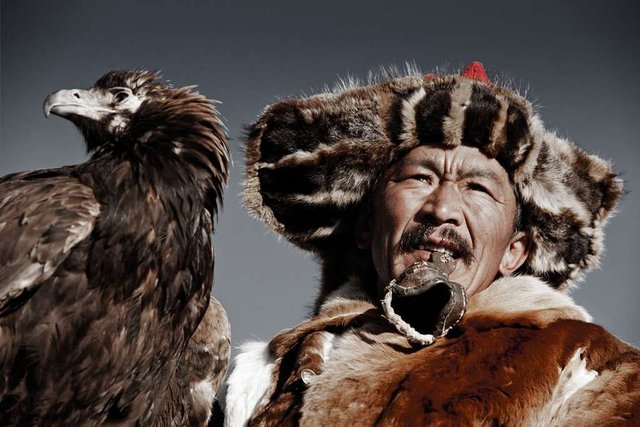
They come from a Turkish ethnic group in northern Central Asia, are semi-nomadic and live from pastoralism, among which are the eagle hunt. They then wear a black coat , a hat lined with fur, loovuuz, and boots. They live in richly furnished yurts with embroidered fabrics and felt. They are great consumers of lamb meat, a horse, which they are used to salting and drying in order to preserve it. They prefer sour milk, which is better preserved and more suitable for the nomadic way of life.
The Maori - New Zealand

The Maori are a fascinating native people . They came in waka (pirogue) from the island of Hawaiki in Central Polynesia. Traditional Maori culture is expressed through art, legends, tattoos (ta moko), dances (especially the haka supposed to intimidate the enemy), costumes and a great sense of hospitality. Polytheist people the Maori worship many gods, goddesses and spirits. They adopted a Western way of life, while maintaining their social and cultural customs. The basic diet (kai) is made up of birds and fish that are complemented by wild herbs and roots. They grow in their gardens gourds, and tubers such as Yam and sweet potato (kumara). They are currently about 650,000 Maori in New Zealand.
The Mursis - Ethiopia
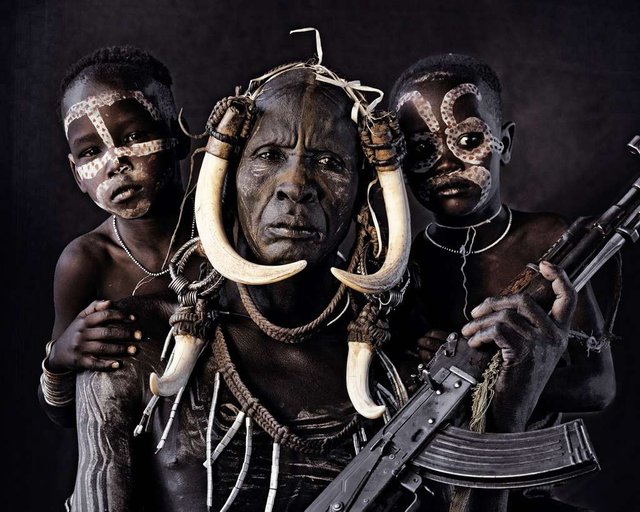
They live close to the Kenyan border in the lower Omo valley. This tribe has its own idiom, the mursi. The livelihoods of this tribe of nomadic shepherds are becoming more and more difficult, following severe droughts , but also the creation of national parks with their fences and roads. Women are known throughout the world for the labret, clay tray adorning their mouth. To pass from childhood to adulthood, young men must submit to the ceremony of the "bull jumping.", Cattle are aligned flanks against flanks. Each naked man must perform four passes on their backs without falling. They live in huts made of reeds, thatch , branches and twigs.
The Samburus - Kenya
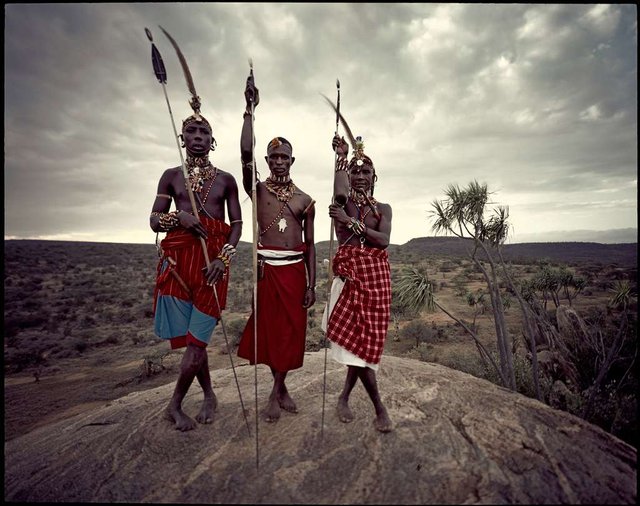
The Samburus are about 140,000 and inhabit the Rift Valley province in northern Kenya. The steppes allow them to breed cattle, goats, sheep and dromedaries . Samburu is a dialect of the nilotic language called Maa , also spoken by the Maasai. This people believes in a distant creator, a supreme god, whom they call Nkai or Ngai. The worship of ancestors and even witchcraft are very widespread, they believe in spells and practice traditional rituals to obtain fertility , protection, healing ..... They live in huts made of interlaced branches, animal skins and mud , An easy to dismantle material for transport. The warriors braid their long hair and dye it with red ocher . They are all richly adorned with necklaces, bracelets and earrings in very colorful pearls.
The Vanuatuans - Vanuatu Islands
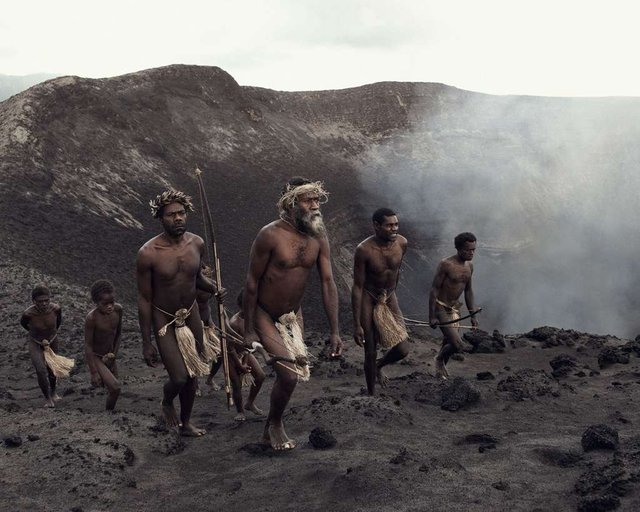
They populate the Republic of Vanuatu, in Melanesia which group 83 islands of the Southwest Pacific Ocean. They perform large ceremonies and exchange food: taros, yams, kava, poultry, pigs and chickens. The Toka festival is one of the traditional events that lasts three days. Dance is a big place for the Vanuatuans. The namba is a traditional penis case made of bark or pandanus leaves. The women wear pagnes made with leaves, woven mats, hibiscus fibers. The ceremonial dish the laplap is a cake made from grated roots or plantain bananas mixed with coconut , vegetables and meats,
The Hulis - Papua New Guinea
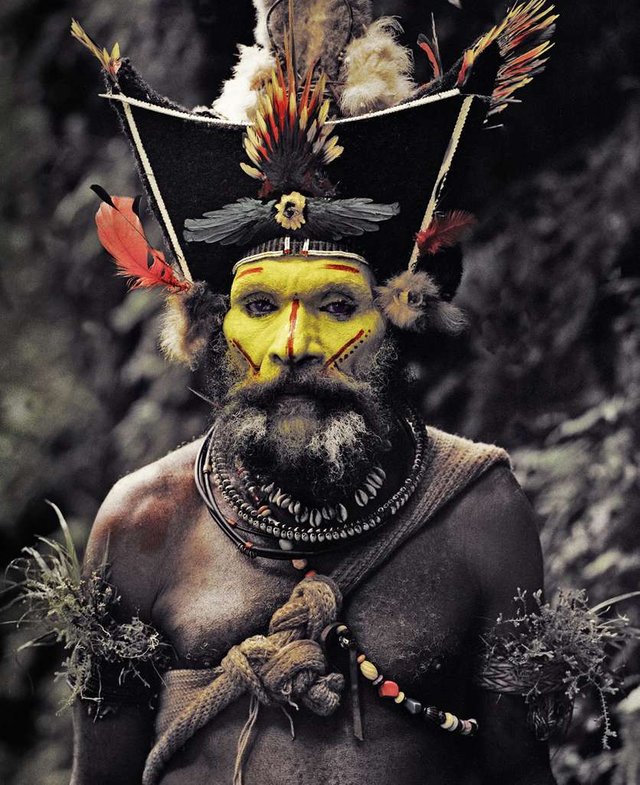
The Huli live in the high lands of Papua New Guinea, and are thought to have migrated to the island there are more than 45000 years. It is the most important tribe of this island, nicknamed "Men wigs", famous impressive wigs made with their own hair. They are decorated with feathers of birds of paradise, parrots. Shells, pearls, pig defenses, hornbill skulls and leaves are also used. Traditionally animists, they make offerings according to established rituals in order to appease the spirits of their ancestors. They see illness and misfortune as the work of sorcery. They are very respectful of the wonders of nature. The men help clear the land, The rest is left to women, who are unrivaled farmers. They grow sweet potatoes, wheat and various varieties of cabbage and cassava. They live in thatched huts , two to four per community. Women sleep in one hut and men in another.
The Huaoranis - Ecuador
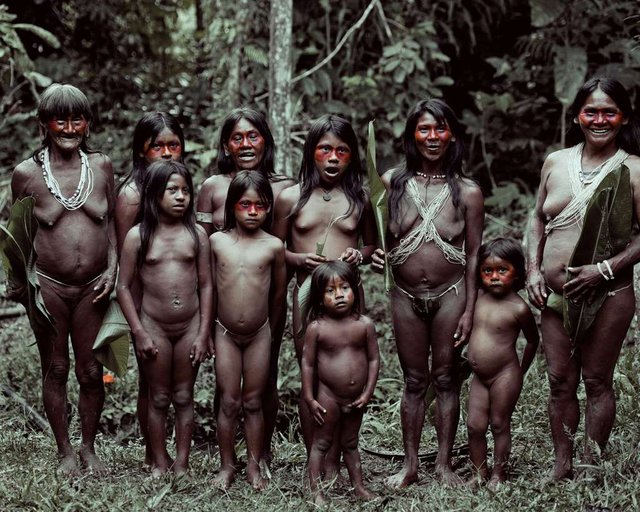
For about 10,000 years, the Oriente, the humid tropical forest of Ecuador, is the refuge of the Huaoranis. They are now only 2,000. Considering themselves the most courageous tribe in the Amazon, these dreaded hunters and dreaded warriors live in a green and very humid jungle. In 1956, they had never had contact with the outside world, since they fought to protect their territory threatened by oil prospecting. They identify with the jaguar , and their mythology wants them to be descendants of the union of this feline and an eagle. They have a great knowledge of plants and trees , as well as their use, as medicines, poisons, Hallucinogens and building materials. For them, family life is the most important. They feed on monkeys, birds, peccaries, bananas , cassava, peanuts, sweet potatoes, berries and other fruits.
The Kalam - Papua New Guinea
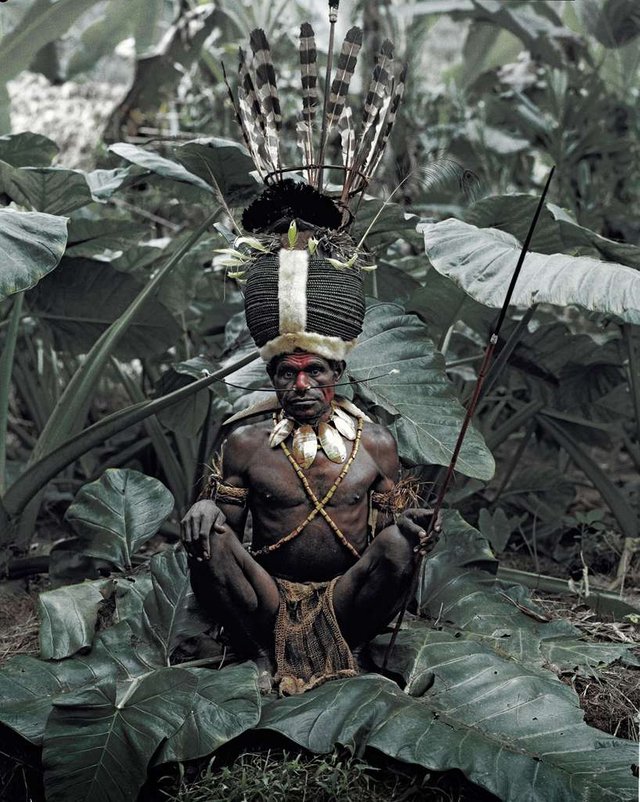
They are native to Papua New Guinea, and are smaller than the vast majority of Papuans. The indigenous population is one of the most heterogeneous in the world. Traditionally, the different tribes scattered across the high plateau, live in small agrarian clans. The first visitors were impressed to find valleys with carefully planned gardens and irrigation ditches . The women of this tribe are outstanding farmers. The men watch over the territory, hunt and fight other tribes of their lands . A great effort is made to impress the enemy with terrifying masks, wigs and paint. They wear extraordinary hairstyles made of hundreds of scarabs,
The Yalis - Indonesia
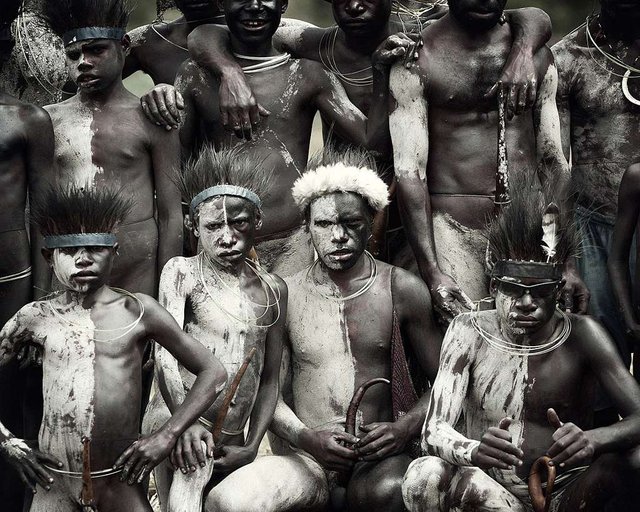
The Yalis "Lords of the Earth " live in the heart of the Jayawijaya Mountains, in the Indonesian province of Papua. The koteka , a long and slender penis case, is one of the peculiarities of this tribe. It is made in a coloquinte and is part of the traditional costume, as well as facial and body ornaments made of bone, dog or pork teeth . They practice polygamy. The Yalis build round or oval huts wood , topped with thick roofs of thatch . Men, women and children sleep in separate huts ( honai ). Sago is the staple diet, but is supplemented by larvae , Wild pigs, snakes, and casoars. As vegetables they consume palm leaves, ferns and fruits of the breadfruit tree .
The Dassanetchs - Ethiopia
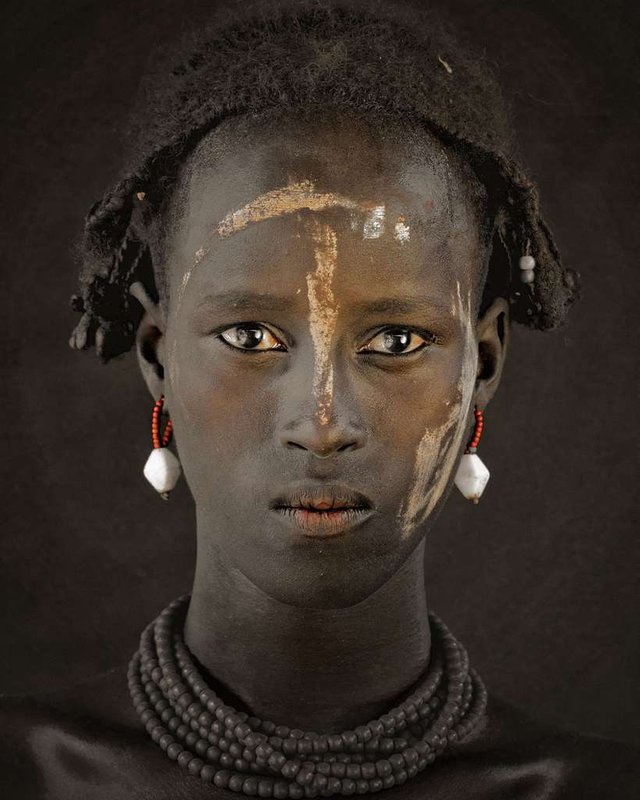
The Dassanetchs "People of the delta" with 20,000 inhabitants inhabit the valley of the Omo. They practice tribal dances and ritual songs . To prepare for a ceremony, they paint their faces with kaolin, the ocher , the ore of iron red and charcoal from wood . Men make themselves, with the clay of the chignons which they adorn with feathers. They believe that some men exercise power over water and crocodiles and that they can treat hormonal disorders within the tribe. This tribe leads a simple existence, engaged in hunting, gathering, Livestock husbandry and the cultivation of sorghum on the banks of rivers. If necessary, they fish and hunt the crocodile in Lake Turkana.
The Karos - Ethiopia
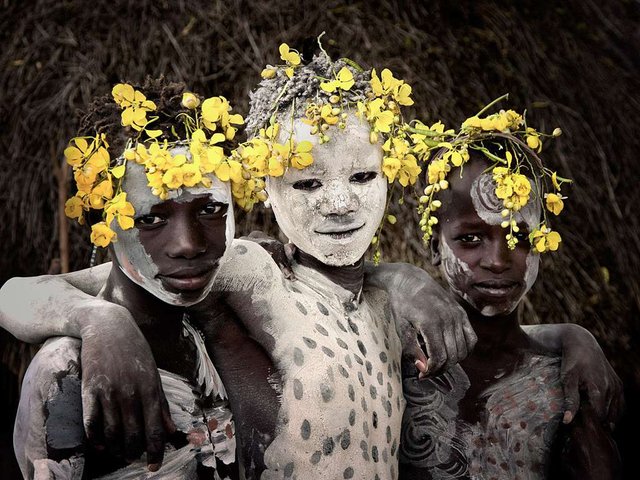
The Karos range from 1,000 to 3,000 individuals living on the left bank of the Omo River in southwestern Ethiopia. Polygamy is allowed: a man can have as many wives as he wants, provided they can support themselves. The most important ceremony in the life of a father, the Dimi aims to celebrate and bless his eldest fault so that it is fruitful and one day marries. They are part of traditional animism, most of its members call themselves Muslims. Hemispherical buildings without bulkheads, huts consist of twigs, thatch , reeds and mix of branches and branches. Each family has two housing units: ono, Which is the main living room of the family, and the gappa, flat roof construction assigned to various household activities. Meat and milk are the staple foods, but they can grow sorghum, corn and beans.
The Nenets - Russia
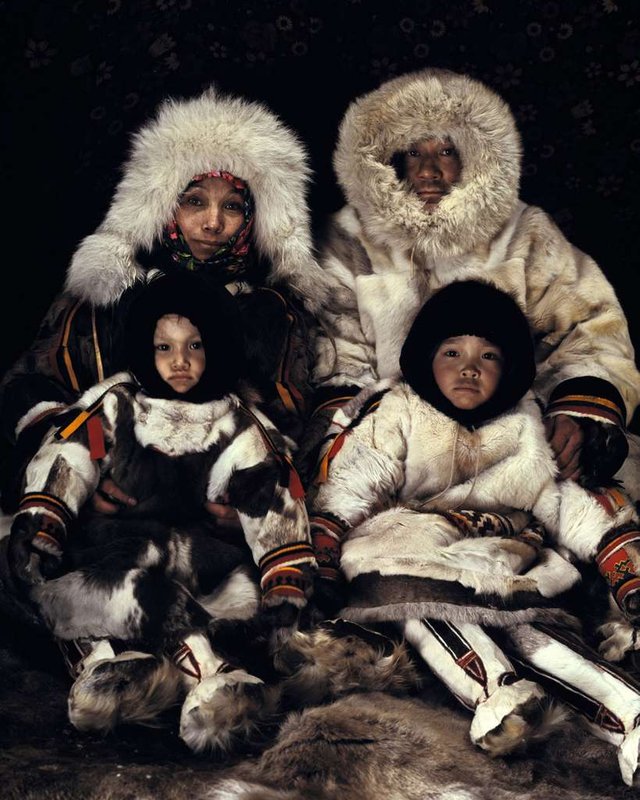
A nomadic group of reindeer herders from the Siberian Arctic , most of them occupy the Yamal peninsula in the northeastern part of the Urals. They live for more than a millennium in one of the most inhospitable environments of the planet, -50 ° in winter + 35 ° C in summer. Reindeer occupy a prominent place in the life and traditions of the Nenets, market value, food, protection, clothing ... The reindeer are revered. The men wear a malitsa , a kind of leather coat , fur-lined. In the extreme conditions they put on another layer of reindeer fur, the gus . The yagushka women's clothing double thick. The Néntses wear long boots with an inner boot the tobak i and an outer boot the kisy . They live in the tchoums , family tents made of reindeer skins. Their favorite drink is Ceylon black tea, and they feed on reindeer meat, dried fish .
Reference : www.jimmynelson.com.

Amazing shots, really clear and high quality, interesting post thanks for sharign it :) #keepsteemin
You're welcome.
Congratulations @yo117! You have completed some achievement on Steemit and have been rewarded with new badge(s) :
Click on any badge to view your own Board of Honor on SteemitBoard.
For more information about SteemitBoard, click here
If you no longer want to receive notifications, reply to this comment with the word
STOP